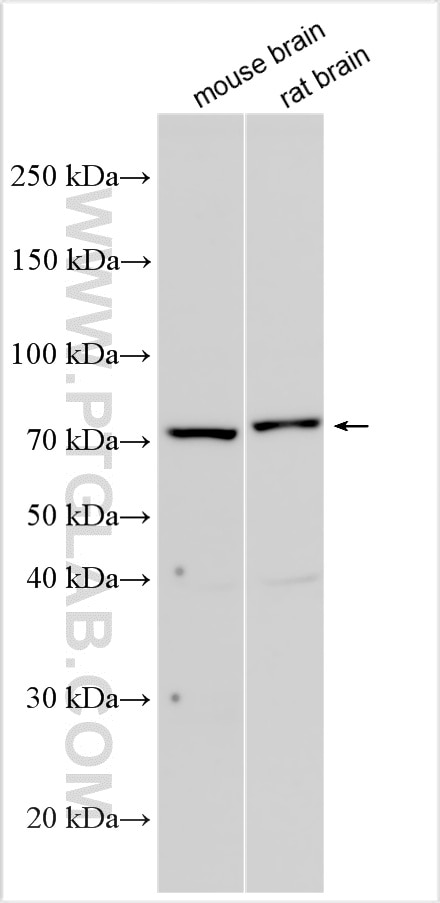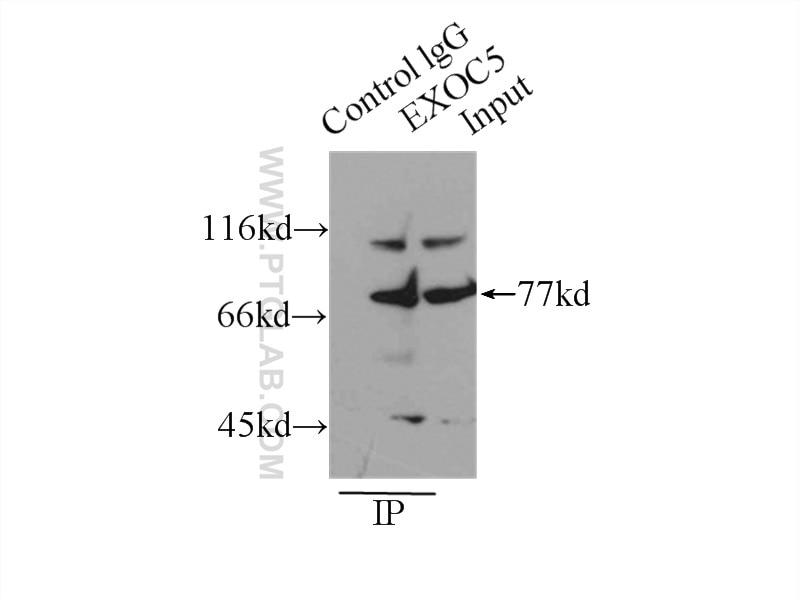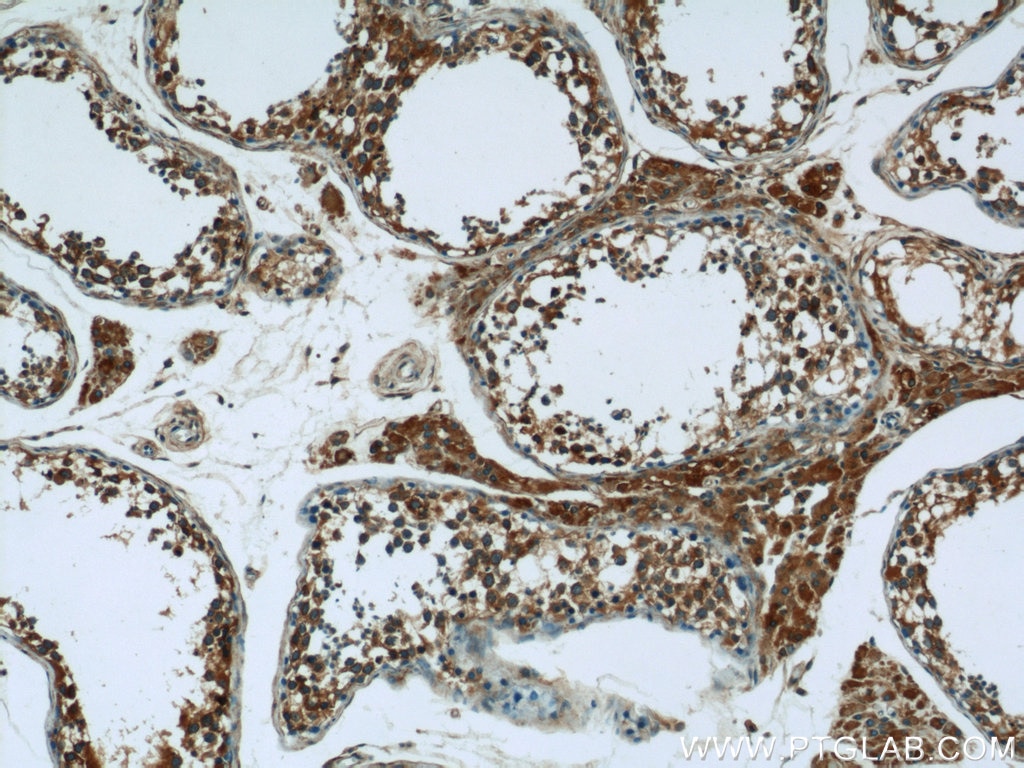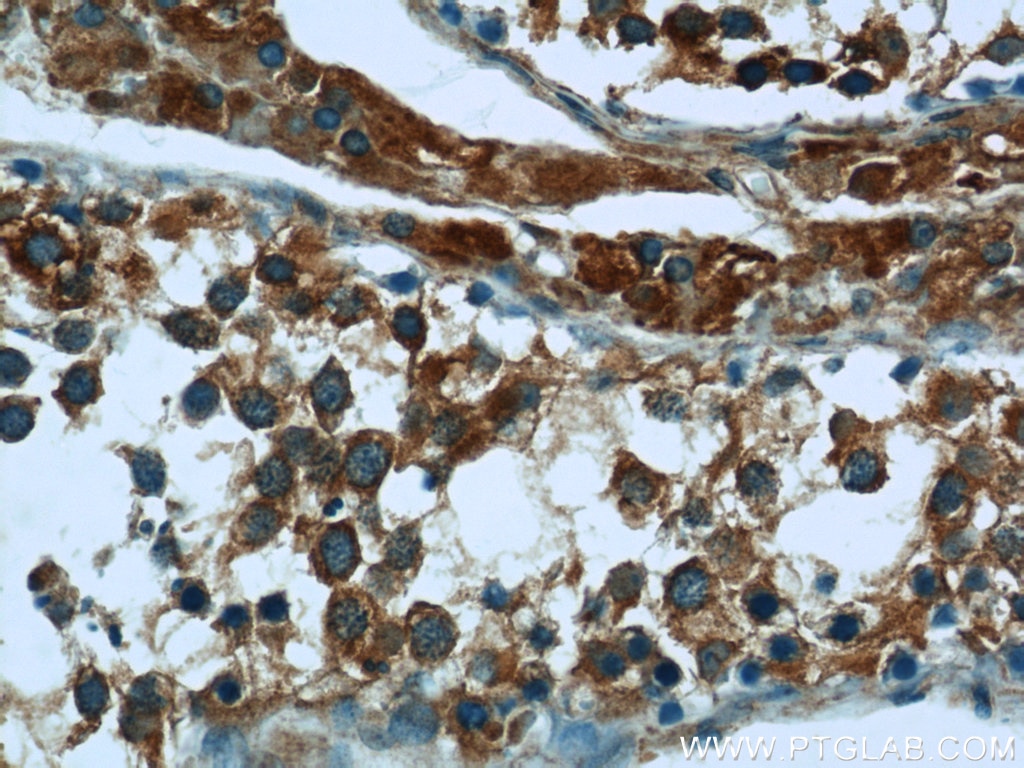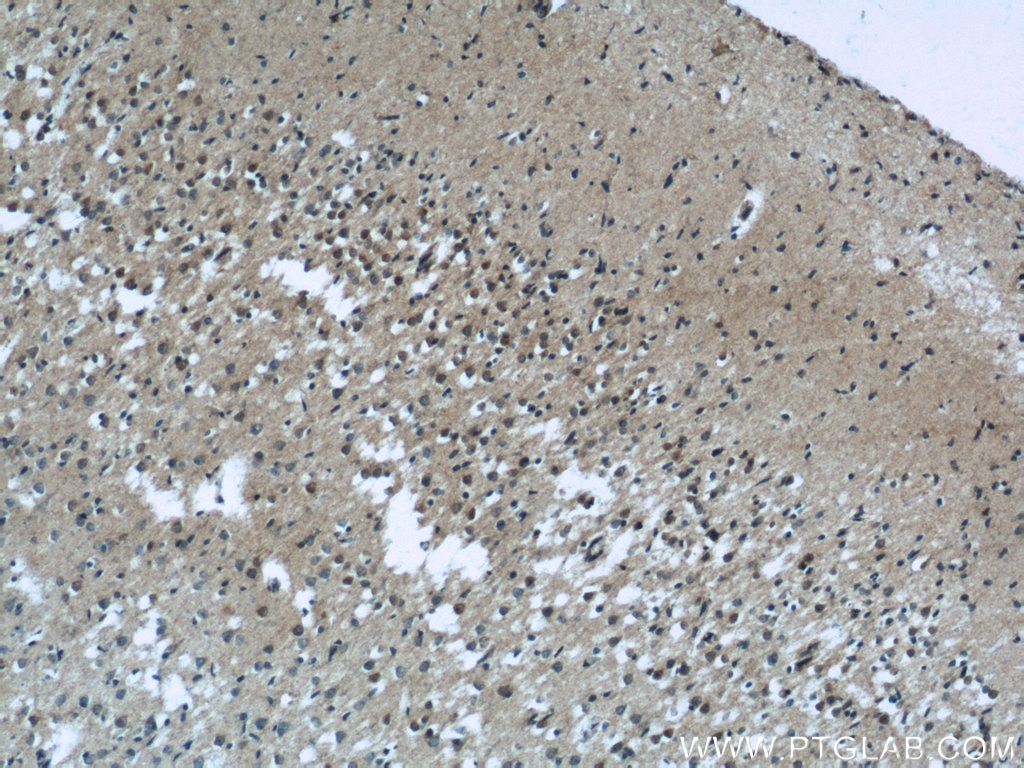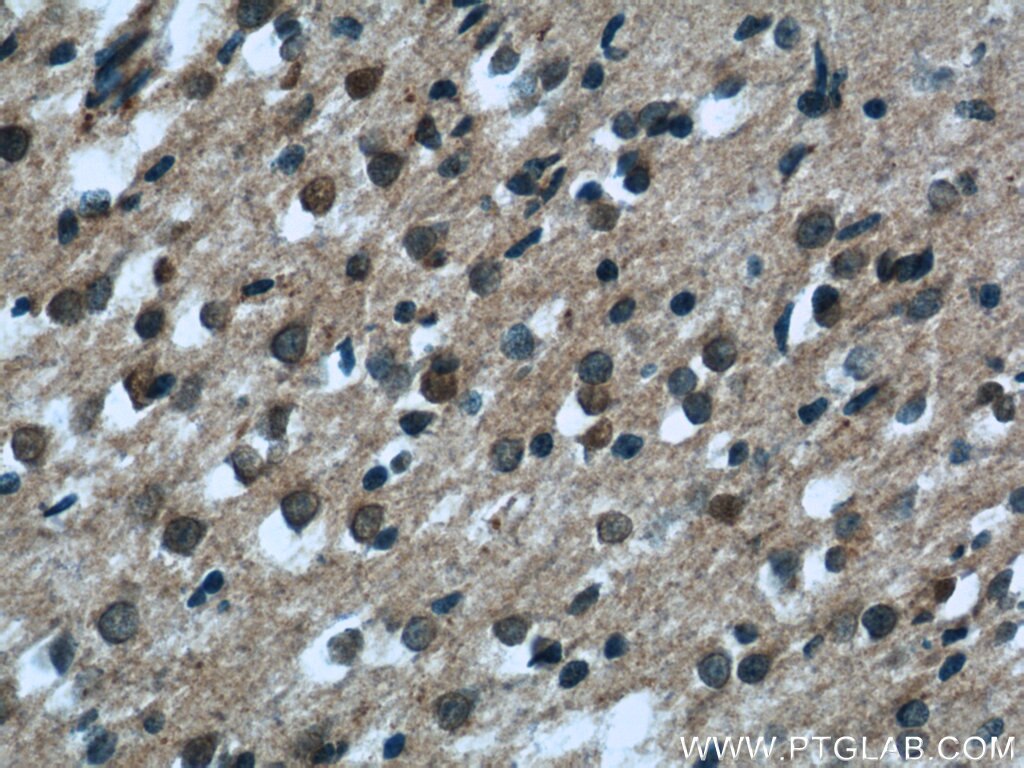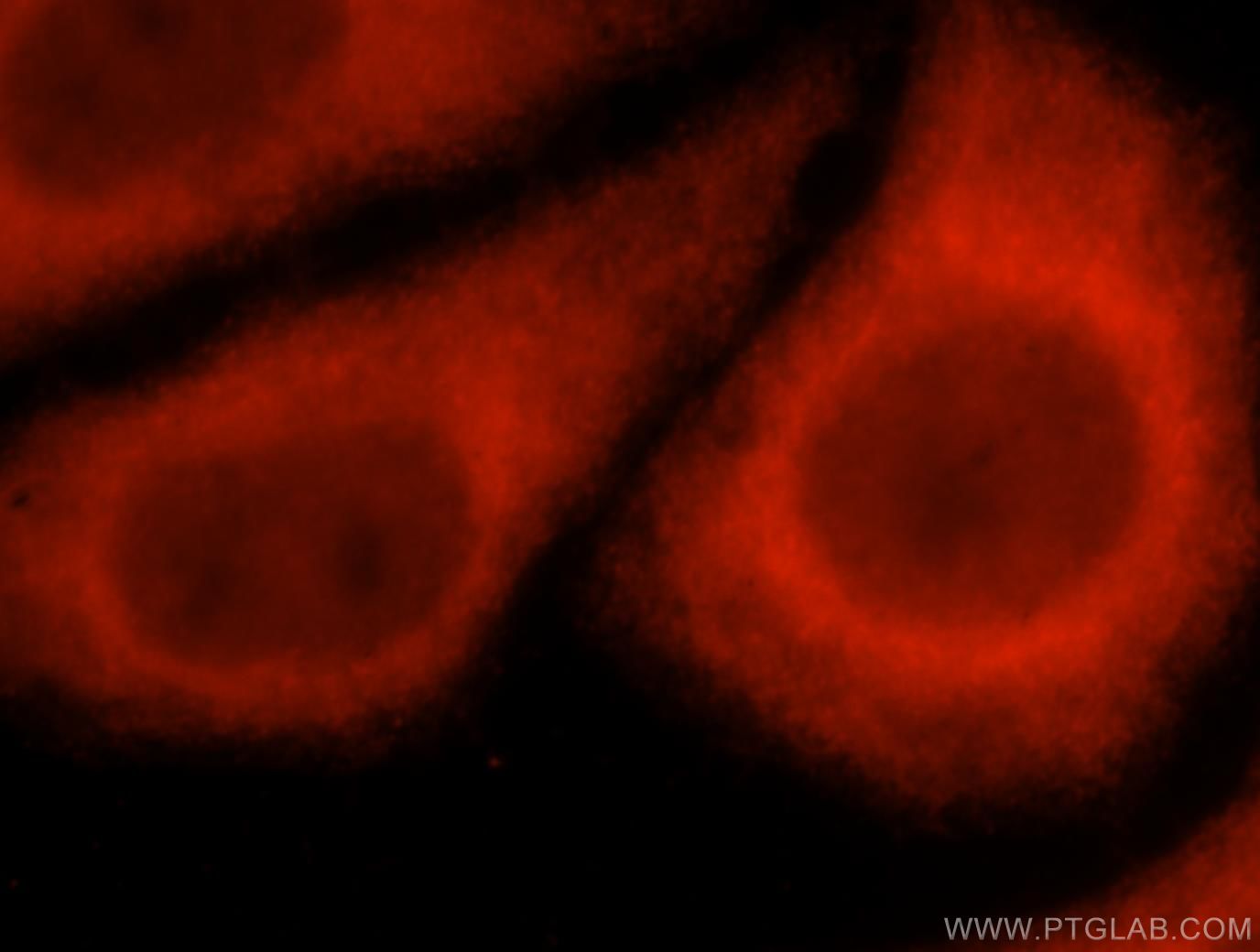- Featured Product
- KD/KO Validated
EXOC5 Polyklonaler Antikörper
EXOC5 Polyklonal Antikörper für IHC, IF/ICC, IP, ELISA
Wirt / Isotyp
Kaninchen / IgG
Getestete Reaktivität
human, Maus, Ratte
Anwendung
WB, IHC, IF/ICC, IP, ELISA
Konjugation
Unkonjugiert
Kat-Nr. : 17593-1-AP
Synonyme
Geprüfte Anwendungen
| Erfolgreiche IP | Maushirngewebe |
| Erfolgreiche Detektion in IHC | humanes Hodengewebe, humanes Hirngewebe Hinweis: Antigendemaskierung mit TE-Puffer pH 9,0 empfohlen. (*) Wahlweise kann die Antigendemaskierung auch mit Citratpuffer pH 6,0 erfolgen. |
| Erfolgreiche Detektion in IF/ICC | HepG2-Zellen |
Empfohlene Verdünnung
| Anwendung | Verdünnung |
|---|---|
| Immunpräzipitation (IP) | IP : 0.5-4.0 ug for 1.0-3.0 mg of total protein lysate |
| Immunhistochemie (IHC) | IHC : 1:20-1:200 |
| Immunfluoreszenz (IF)/ICC | IF/ICC : 1:10-1:100 |
| It is recommended that this reagent should be titrated in each testing system to obtain optimal results. | |
| Sample-dependent, check data in validation data gallery | |
Veröffentlichte Anwendungen
| KD/KO | See 4 publications below |
| WB | See 12 publications below |
| IHC | See 1 publications below |
| IF | See 3 publications below |
Produktinformation
17593-1-AP bindet in WB, IHC, IF/ICC, IP, ELISA EXOC5 und zeigt Reaktivität mit human, Maus, Ratten
| Getestete Reaktivität | human, Maus, Ratte |
| In Publikationen genannte Reaktivität | human, Maus, Ratte |
| Wirt / Isotyp | Kaninchen / IgG |
| Klonalität | Polyklonal |
| Typ | Antikörper |
| Immunogen | EXOC5 fusion protein Ag11524 |
| Vollständiger Name | exocyst complex component 5 |
| Berechnetes Molekulargewicht | 708 aa, 82 kDa |
| Beobachtetes Molekulargewicht | 77 kDa |
| GenBank-Zugangsnummer | BC041126 |
| Gene symbol | EXOC5 |
| Gene ID (NCBI) | 10640 |
| Konjugation | Unkonjugiert |
| Form | Liquid |
| Reinigungsmethode | Antigen-Affinitätsreinigung |
| Lagerungspuffer | PBS with 0.02% sodium azide and 50% glycerol |
| Lagerungsbedingungen | Bei -20°C lagern. Nach dem Versand ein Jahr lang stabil Aliquotieren ist bei -20oC Lagerung nicht notwendig. 20ul Größen enthalten 0,1% BSA. |
Hintergrundinformationen
EXOC5 (SEC10), a component of the exocyst complex, is a 77-kDa protein with a broad tissue distribution (PubMed: 9119050). The exocyst complex, composed of eight evolutionarily conserved subunits (SEC3, SEC5, SEC6, SEC8, SEC10, SEC15, EXO70, and EXO84), is essential for targeting exocytic vesicles to specific docking sites on the plasma membrane. The complex is also essential for the biogenesis of epithelial cell surface polarity.
Protokolle
| PRODUKTSPEZIFISCHE PROTOKOLLE | |
|---|---|
| WB protocol for EXOC5 antibody 17593-1-AP | Protokoll herunterladen |
| IHC protocol for EXOC5 antibody 17593-1-AP | Protokoll herunterladenl |
| IF protocol for EXOC5 antibody 17593-1-AP | Protokoll herunterladen |
| IP protocol for EXOC5 antibody 17593-1-AP | Protokoll herunterladen |
| STANDARD-PROTOKOLLE | |
|---|---|
| Klicken Sie hier, um unsere Standardprotokolle anzuzeigen |
Publikationen
| Species | Application | Title |
|---|---|---|
Cell RalB and the exocyst mediate the cellular starvation response by direct activation of autophagosome assembly.
| ||
Elife Functional hierarchy among different Rab27 effectors involved in secretory granule exocytosis | ||
Mol Cancer Res EXOC4 Promotes Diffuse-Type Gastric Cancer Metastasis via Activating FAK Signal.
| ||
Cells The Exocyst Is Required for CD36 Fatty Acid Translocase Trafficking and Free Fatty Acid Uptake in Skeletal Muscle Cells | ||
J Biol Chem Disrupted glucose homeostasis and skeletal muscle-specific glucose uptake in an exocyst knockout mouse model.
|
